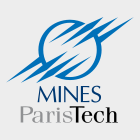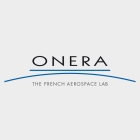Z-set is the result of 40 years of close collaboration between the École des Mines ParisTech (France) and Onera – the French Aerospace Lab and various academic partners.
The Technology Transfer group of École des Mines operates at the crossroads between research and industrial reality. Formed by PhD-level mechanical engineers specialized in numerical modeling and simulation, the group works in synergy with researchers at Ecole des Mines, acting as an assistance service for PhD students and researchers, and places its long-standing expertise gained there at the service of industry. New functionalities are then developed in the Z-set code to satisfy specific industrial needs. Sophisticated and high-performance on-demand calculations can be performed for the industrial partners. Finally, the team organizes courses to train end-users in the optimized use of the vast range of possibilities of Z-set.
Onera, the French Aerospace Lab, is a multidisciplinary organization that brings together experts in energetics, aerodynamics, materials, structures, electromagnetism, optics, instrumentation, atmosphere and space environments, complex and onboard systems, information processing and long-term design.
The materials and structure branch has a long-standing reputation in the field of constitutive models and damage mechanics. This is applied in several domains, such as high-temperature metallic or composite materials and structures for aerospace engines, as well as their damage tolerance. In order to develop and test new models, Onera has contributed very significantly to the development of the finite element code Z-set and, in doing so, has acquired a strong experience in FE formulations and implementations. We bring in our expertise with finite elements and material mechanics, and massively parallel high-performance computations.
Milestones
1981-1982
First versions of Zébulon (Apple II, Fortran) at École des Mines
1984
Unique version, 2D-3D, plasticity
1988
Unix/Sun Version, graphical post-processor, fracture mechanics, thermal problems
Beginning of the ’90s
Available for all platforms, post-processing, interactive mesh generation, constitutive equations
1991-1995
First C++ version
1996
First parallel version, ONERA
1996
Creation of NW Numerics & Modeling, Inc
1997
Optimizer, diffusion laws
1998
Commercial Z-mat for Abaqus
1999
New version of the GUI – Zmaster
2000
Dynamic and explicit solvers
2002 – 2003
Interface with other commercial FE codes (Ansys, Cosmos, etc.)
2004
Z-set becomes the official research code at Snecma and ONERA
2005
Development of the interface with world class CAO/mesh generation (OpenCascade, INRIA)
2006 – 2011
Crack propagation (X-FEM, FEM), two-level parallel computing

